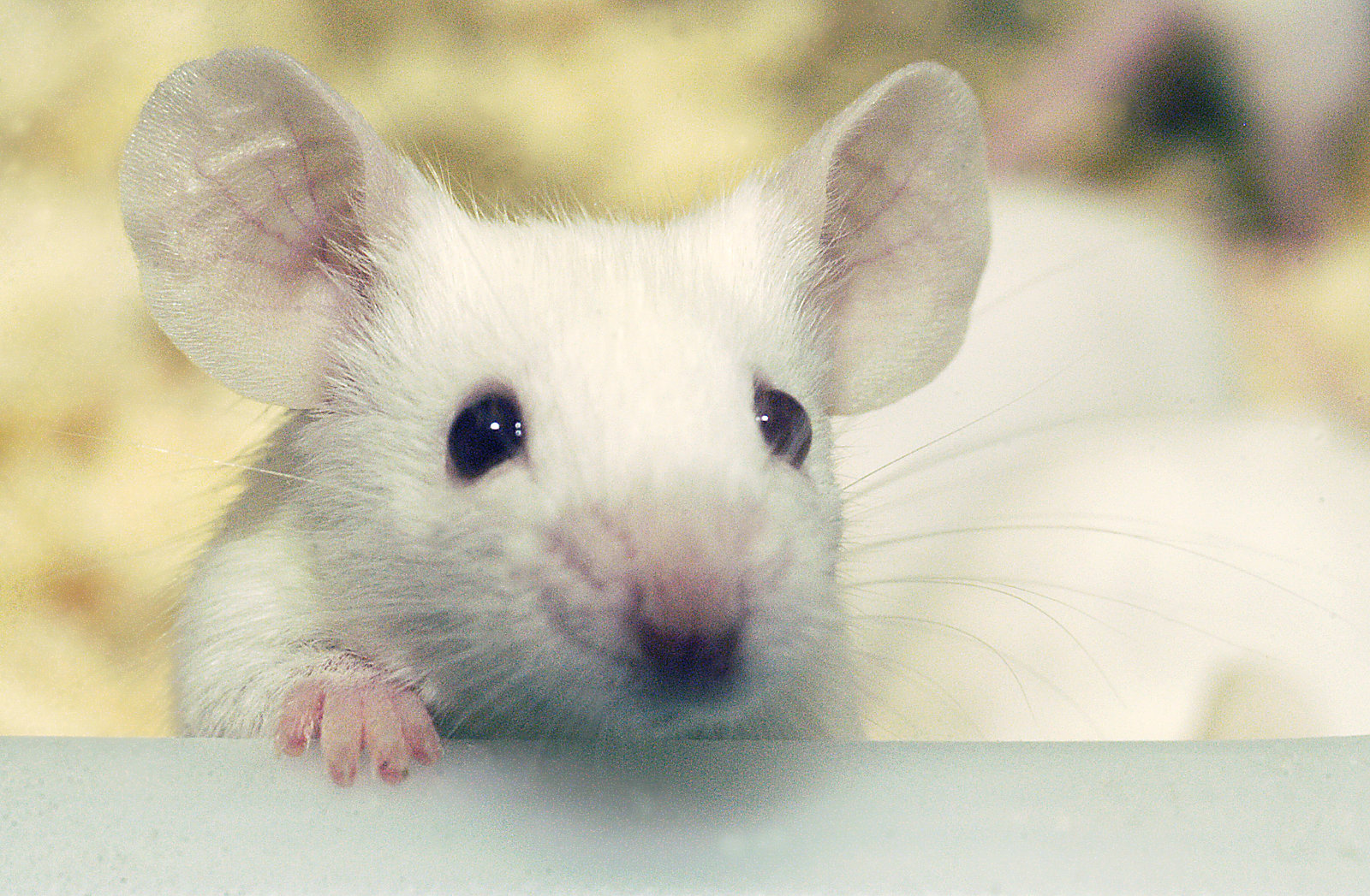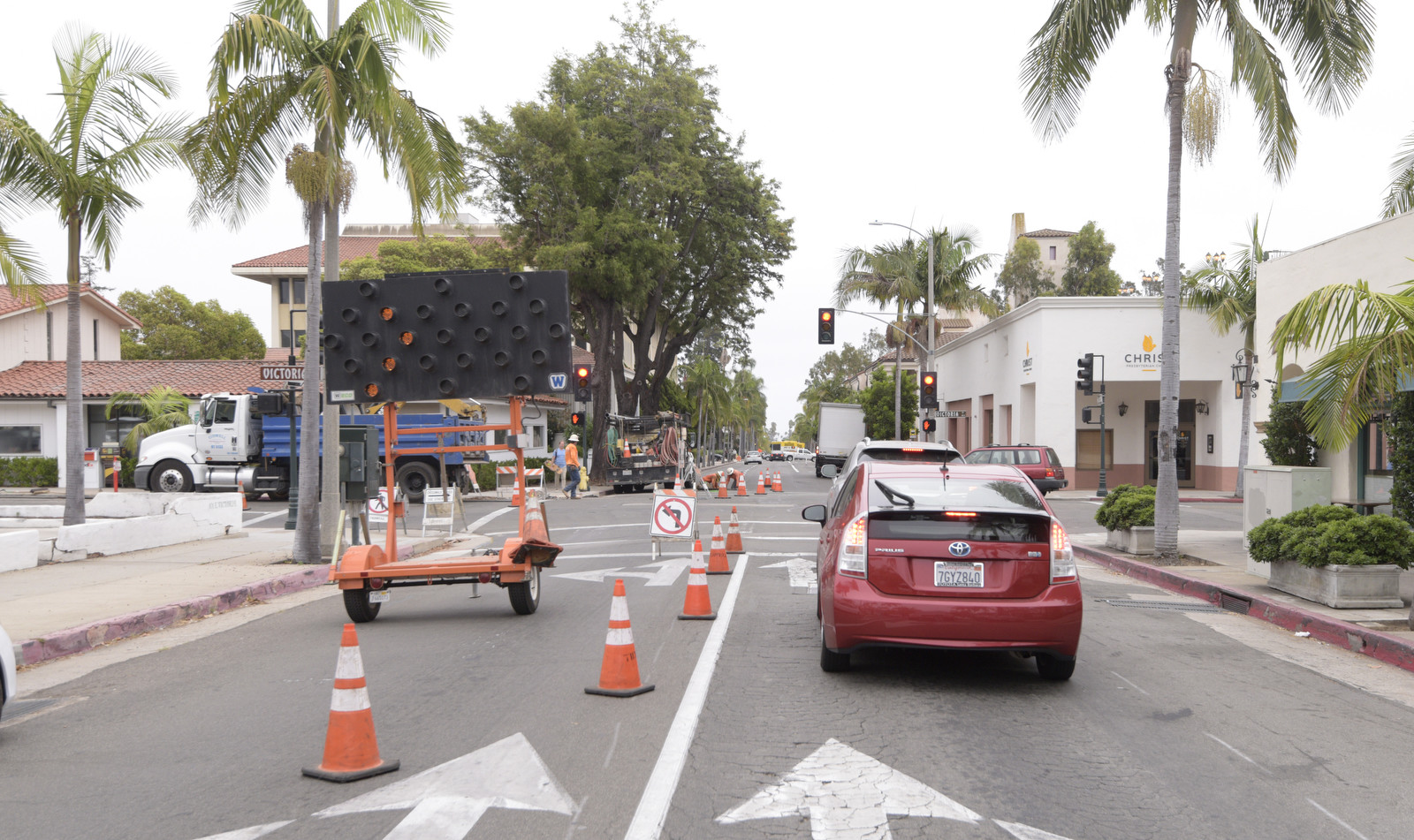You Can’t Get There from Here, and It’s Not an Accident
Pop-Up Road Construction and Cellular Projects Plague Santa Barbara’s Downtown Streets

Among the many blessings I count is that I was not born a lab rat. If forced to rely upon my native intelligence to navigate the myriad of mazes needed to eat that enticing rat pellet, I would have starved to death eons ago.
I have ruminated on this every day for over a year now. That’s because no matter which way you want to turn in downtown Santa Barbara, you can’t get there from here. Santa Barbara has become an ever-evolving pop-up festival of seemingly random road construction. Almost every intersection is blocked by a sprawling crew of orange shirts, hard hats, and steel-toed boots, all gouging yet another precisely engineered trench into what had seemed just the day before a perfect stretch of road. What they leave behind is a patchwork quilt of road scars, street acne, potholes, and heavy metal plates. We curse; we shrug; we move along. It’s the background noise of being alive.
Initially I suspected this might be some diabolical scheme hatched by alt-transit agitators — Ed France, you know who you are — to force people to abandon their motor vehicles. Or maybe it was City Hall infusing some much-needed road-repair pork into the local economy. Given the broader political context we now live in daily, my brain gravitated toward conspiratorial explanations, conspiracies being the last gasp for optimists seeking to impose order upon the chaos. But sometimes “it” just happens.
It turns out a large chunk of the disruptive construction has been launched by Southern California Edison (SCE) to increase the reliability of the downtown grid system so that we’re less susceptible to rolling blackouts inflicted by marauding heat waves. Given that Santa Barbara finds anything utilitarian to be aesthetically offensive, this has forced SCE to put underground its transformer boxes that hitherto have sat, tortoise like, sunning themselves on city sidewalks. All that should be done sometime next year, so deal with it.

More complicated is the work undertaken by Crown Castle, which does for cellular technology what Caltrans does for highways. Over the past year, Crown Castle has been creating a nodular necklace of nine mini cell towers decoratively disguised as faux street lights throughout downtown. The term “tower” — even when preceded by the term “mini” — having negative connotations, the industry prefers to call these a “distributed antenna system.” During big events — Fiesta, Solstice, the Christmas parade — the mass of human bodies impedes the flow of signals: Calls get dropped, commerce stops, people can’t Facebook their selfies, and civilization comes crashing to its knees. The new nodes are paving the way for the 5G revolution in cellular service delivery to facilitate what’s known as the Internet of Things. That’s where your smartphone can talk to your refrigerator and Mr. Coffee Coffeemaker all day while you’re out working. To make this happen, companies like Crown Castle will be installing a whole lot of low-powered “towers.” Because their reach is less, more will be needed, and they will have to be clustered together.
According to City Hall, Crown Castle should have finished the job June 5. City Hall is freaking because it wants the last trench — dug along State Street right before Haley — filled in and polished off in time for next week’s Mondo Grande Fiesta Parade. We don’t need any prancing Palominos losing their footing or horse-drawn carretas tipping over.
Crown Castle bristles at the suggestion that they are in any way lagging. Were it not for the many months they were forced to spend arguing the aesthetics of faux light poles with know-it-all commissioners on city design-review boards, company officials have intimated through clenched teeth, the project would have been finished long ago.
Left undiscussed — let alone argued — during those deliberations was anything having to do with the health effects of the electromagnetic radiation these nodes give off. Federal safety guidelines were last revised in 1996. Those safety levels were designed to protect those exposed from being cooked by the radiation. But recent science — and it appears there’s a lot of it — suggests that cooking may be the least of our worries.
This past February, the National Toxicology Program — part of the Department of Health and Human Services — released a much-ignored report indicating that male rats exposed to high blasts of cell-phone radiation were 6 percent more likely to develop malignant tumors in their hearts. Specifically, the tumors developed in cells that surround nerve endings. Despite the dearth of media focus, scientific experts took note. A high-ranking expert with Kaiser Permanente’s Research Division decreed them “stunningly important.” Other studies have suggested a link between exposure and certain types of brain cancer. In 2011, the World Health Organization issued a health warning, and in Belgium, France, and Israel, the sale of cell phones to children is banned.
The studies raise no shortage of questions. Many inconsistencies have yet to be resolved, which allows me to live my life in the permanent state of denial I need. In the United States, we are befuddled as usual by the alleged disagreement among scientific experts. But that may be misleading. Of 326 reports on the issue released between 1990 and 2006, 44 percent found there was no risk, while 56 found there was some. When industry funding was factored in, however, those results changed drastically. Of the independently funded studies — no industry ties — 67 percent found there was a biological effect.
It’s a good day to not be a lab rat.



